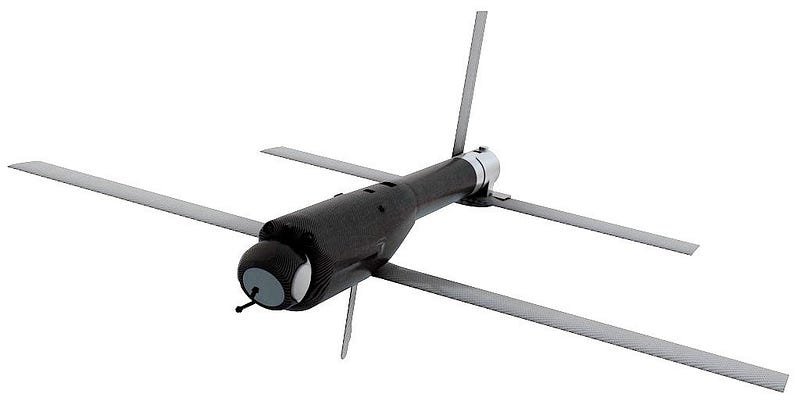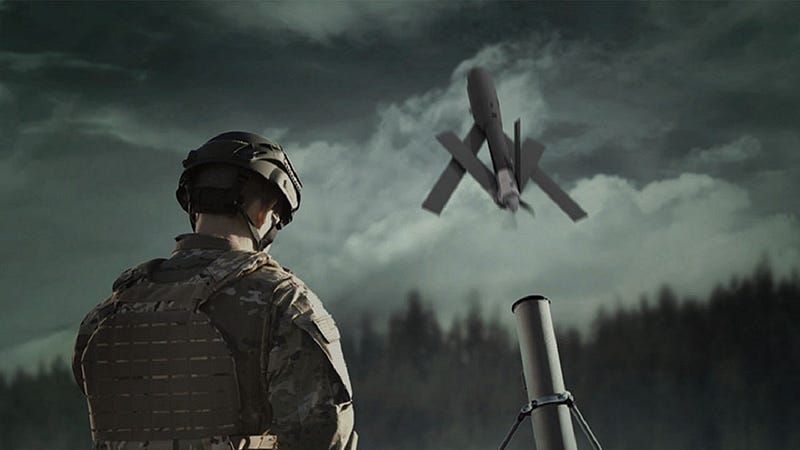Kamikaze Drones: The Game-Changer in Ukraine's Warfare Strategy
Written on
Chapter 1: The Rise of Switchblade Drones
Imagine gazing up into the crisp, azure sky, observing birds gliding in circular formations. Their wings flap silently as they trace intricate patterns in the air—S-curves and figure-eights. Suddenly, one of these 'birds' swoops down, crashing into a nearby cluster of soldiers, detonating upon impact and causing destruction. As chaos ensues, another drone follows, then another, unleashing a storm of shrapnel that takes down more personnel. Welcome to the future of combat, poised to unfold in eastern Ukraine, potentially sealing the fate of Russia's invasion.
Ukraine has recently received a shipment of 600 switchblade drones, with an initial batch of 100 already in use, and possibly more acquired through unofficial channels. These drones are lightweight, easy to deploy, and can be readied in mere minutes, making them ideal for rapid response. They can be packed away in a backpack and launched using a simple tube that emits a soft whooshing sound, reminiscent of a bottle rocket. Once airborne, the drone deploys its wings, which resemble blades, hence the name:

What’s astonishing about these drones is their range of 15 to 40 miles, depending on the model. They can hover above their targets, lurking inconspicuously among the birds, earning the moniker "loitering munition." Unlike standard missiles that rush towards their target with relentless force, switchblade drones operate with a level of discretion, assessing their surroundings and choosing their moment to strike. They can even abort their mission mid-flight if civilian casualties seem likely, redirecting to more suitable targets, such as munitions caches or fuel tanks near enemy troops.
These drones can be operated from a simple app on an iPad or similar tablet, and their cost is remarkably low—just $6,000 compared to the $110,000 for a traditional Javelin missile. Essentially, they provide a kamikaze strike capability without the risk of losing soldiers.
Section 1.1: The Tactical Advantage of Switchblade Drones
Consider this hypothetical scenario: You've been enlisted in Ukraine's territorial defense force. Stationed in Eastern Ukraine, you and your team of 50 soldiers arrive with two armored personnel carriers and a tank. Suddenly, enemy artillery destroys your vehicles, leaving you surrounded by Russian forces. With three escape routes blocked, you pull out your switchblade drones.
Launching these drones serves two purposes: first, they provide vital intelligence about enemy positions, enabling you to strategize an escape; second, they offer much-needed air support. With Ukraine's air force being limited, these drones introduce a new layer of offensive capability, distracting the enemy and creating opportunities for your team.
Importantly, these drones are difficult to detect. They operate on electric power and produce minimal noise, allowing them to blend in seamlessly with their surroundings. Their ability to fly at reduced speeds further enhances their stealth. When they dive towards an enemy target, the resulting chaos often leads to panic and disarray among enemy troops, buying valuable time for your forces.

Section 1.2: The Significance of Drones in Current Warfare
As Ukraine enters a more challenging phase of the conflict, they will face adversaries on open terrain, where tanks dominate. The Switchblade 300 operates like a mobile grenade, allowing precise strikes, while the Switchblade 600 functions similarly to an airborne Javelin, capable of taking out high-value targets, including $20 million tanks.
The Russian military relies heavily on inexperienced conscripts who tend to cluster together due to fear and lack of training. This makes them particularly vulnerable to switchblade drones. Moreover, the anti-artillery radar recently supplied to Ukraine can pinpoint enemy artillery locations, enabling targeted drone strikes.
While I empathize with these conscripts, reports of their actions in occupied areas diminish that sympathy. Nevertheless, the tactical edge that switchblade drones provide is undeniable. They are at the forefront of military technology, enabling Ukraine to harass enemy positions without effective countermeasures from Russia.
The United States has the capability to mass-produce these drones at a low cost. For $10 million, approximately 1,666 switchblades could be manufactured, establishing drone swarms as a pivotal component of future military engagements.
Chapter 2: Strategic Video Insights
This video discusses how Ukraine is demonstrating its potential to win the war with effective drone strategies, as highlighted by a British ex-colonel's insights.
This video showcases Ukraine's deployment of kamikaze drones targeting Russian oil refineries, marking one of the most intense strikes of the ongoing conflict.